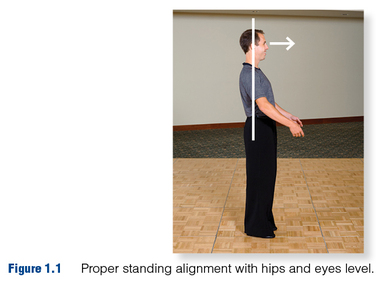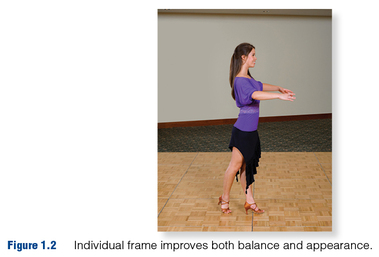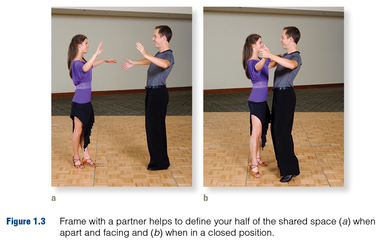Moving like a dancer
This is an excerpt from Social Dance-3rd Edition by Judy Patterson Wright.
Simply being aware of your posture while standing is only part of the image that you present to others. Dancers are movers. Thus, how you carry yourself while moving, which you do when you are walking or taking a series of dance steps, also says volumes about your self-confidence. The topics in the following sections are discussed separately, but you need to put all of them in action when you do the drills at the end of this learning step and later when you step on the dance floor.
Posture
People often think of correct posture as they think of the weather: Everyone talks about it, but what can they do about it? If you aren't aware of your posture, then now is the time to check it and correct it. Visualization techniques are particularly effective ways to learn how to align your body. Try both of the following images. Which one helps you visualize proper vertical alignment? Perhaps other images come to mind.
- Stand with your hands at your sides, your feet no more than shoulder-width apart, and your knees slightly flexed. As if you are balancing large blocks on top of one another, position your hips, shoulders, and head directly above your feet. Look forward with your head erect. It is helpful to look at an object that is at eye level. Think of expanding your shoulder blades, contracting your abdominals, and lengthening (rather than arching) your lower back. You are now in proper standing alignment.
- Imagine a plumb line (a string suspended from the ceiling with a weight on it to keep it vertical) hanging along one side of your body. Adjust your posture so that the outside of your ear, shoulder, hip, knee, and ankle aligns parallel to the string. Check that your weight is evenly placed over both feet, your eyes are level, your spine is straight (especially your neck vertebrae), your shoulders are relaxed and down (not raised or lifted), your abdominals are firmly engaged, your hips are level, and your lower back is slightly and naturally curved (not hyperextended).
Figure 1.1 shows proper standing alignment with the hips and eyes level.

Frame
Standing in good alignment is your first step toward understanding the concept of frame. The term frame refers to the placement of your arms in relationship to your torso, shoulders, and head. Often dancers don't know what to do with their arms. The narrower your base of support, the more important it is to lift your arms and to look at a point in space that is at eye level—like a tightrope walker! However, it is not necessary to extend your arms out horizontally to mimic the tightrope walker. Rather, you can improve both your balance and your appearance if you flex your elbows, lift them slightly away from the sides of your body with palms facing down, and keep them in front of your body rather than let them move behind your body. This arm positioning is an example of individual frame (see figure 1.2). Keeping your individual frame helps to eliminate wasted effort (rather than lowering and extending your arms then bringing them back into position again). Keeping your frame with a partner helps to define and maintain the space between you and your partner. Ideally, each partner is responsible for half of the shared space (see figure 1.3).


A typical frame error occurs whenever you move your arms independently of your shoulder girdle. For example, a common frame error, called spaghetti arms, occurs when the elbows extend behind the body. Leading and following are enhanced when your arms, shoulders, and sternum (your frame) work together as a unit, but leading and following are ineffective if either partner's frame is not established and firm. You'll soon find out that leading and following are more than a matter of pushing and pulling with one's arms and hands. Rather, you need to use your whole body (and frame) to non-verbally communicate with your partner.
Learn more about Social Dance.
More Excerpts From Social Dance-3rd EditionSHOP

Get the latest insights with regular newsletters, plus periodic product information and special insider offers.
JOIN NOW


